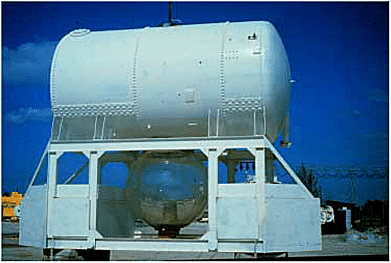the influence of bias or prejudice of the experimenter when testing a hypothesis or a theory. The standard application of the scientific method has four steps:
-
observation and description of a phenomenon or phenomena;
-
formulation of a hypothesis to explain the phenomena;
-
use of the hypothesis to predict the existence of other phenomena, or to predict quantitatively the results of new observations; and
-
performance of experimental tests of the predictions by several independent experimenters.
An ocean exploration program should emphasize observation and description of living and non-living resources, rates, and processes (Step 1). Independent verification (Step 4) should not be included in an exploration program, although it is an important role of more traditional ocean research programs. In Steps 2 and 3, ocean exploration and research overlap; such an overlap is highly desirable and demonstrates the value of exploration for fueling the next generation of hypothesis testing. Ocean exploration should be an integral component of a continuum to ocean research and technology development.
The success of U.S. ocean research programs is due in large part to longstanding support from the National Science Foundation (NSF), Office of Naval Research (ONR), National Oceanic and Atmospheric Administration (NOAA), and other government and private sources. Most research grants are funded on a competitive basis, and proposals are evaluated based on a number of factors, including the significance of the hypotheses to be tested and the methods proposed to test the hypotheses. Commonly, ocean research proposals target well-defined, previously studied areas or sites, in an effort to increase our knowledge and understanding of a particular habitat, biological community, or process. Over the long term, this leads to extensive data sets and detailed theories in a certain scientific discipline or geographic region. While the high quality of ocean research in the United States is indisputable, the funding process does not generally encourage exploration. Proposals without sufficient data to develop testable hypotheses, to drive specific investigations, and to predict specific outcomes from the work are not easily funded (National Science Foundation, 2002). A successful ocean exploration program will use a similarly stringent proposal process, within the framework of a large scale, mission-driven program.
A coordinated, high quality, well-managed ocean exploration program would provide a unique framework for discovery of new species, resources, historical artifacts, habitats, and processes. The review process could allow for and encourage multidisciplinary efforts, and seek to capitalize on the synergy of diverse researchers and techniques. It would provide initial observations and insights into the habitats, geological structure, water column processes, air-sea interaction, biological communities, and evidence of past human activities that can then be used to develop testable hypotheses for ocean research.
KEY FEATURES OF AN OCEAN EXPLORATION PROGRAM
Ocean exploration should be global in scope. Vast regions of the ocean remain
unknown with respect to high-resolution bathymetry, biologic and genetic diversity, chemistry, and geophysics. These poorly studied areas extend beyond territorial waters.
Exploration should receive international support. Nearly half of the people on Earth live within 100 km of the ocean (World Resources Institute, 2001) and demands on the ocean for resources and waste disposal are increasing. Exploration in the coastal ocean requires the active participation of the coastal nations that control the exclusive economic zone (EEZ). Moreover, given the considerable economic investment and effort needed for global ocean exploration, the United States alone cannot explore the vast regions of the ocean yet unexplored and beyond the control of any single nation.
Within the United States, existing and new mechanisms for interagency support should be exploited. Exploration requires a breadth of approaches and integration of the interests and missions of several government agencies, academia, and industry. While the variety of involved agencies fosters a robust ocean research program, the lack of coordination among agencies can be problematic. A strong, sustainable, effective ocean exploration program will require several government agencies to invest in the program.
Ocean exploration should consider all three spatial dimensions, as well as the dimension of time. Explorations of time dependent or times series data over time have typically not received sufficient attention in the study of the ocean. Expeditions to new areas for short periods of time are not adequate for understanding processes, changes, small signals in the presence of high noise, or transient events.
Education and outreach should be integral components of the exploration program. The program should engage the public in the excitement of the undertaking and educate ordinary citizens and decision-makers about ocean issues and policy (Figure 2).

Figure 2. Marine Resources Undersea Laboratory is open for education and public visits.


